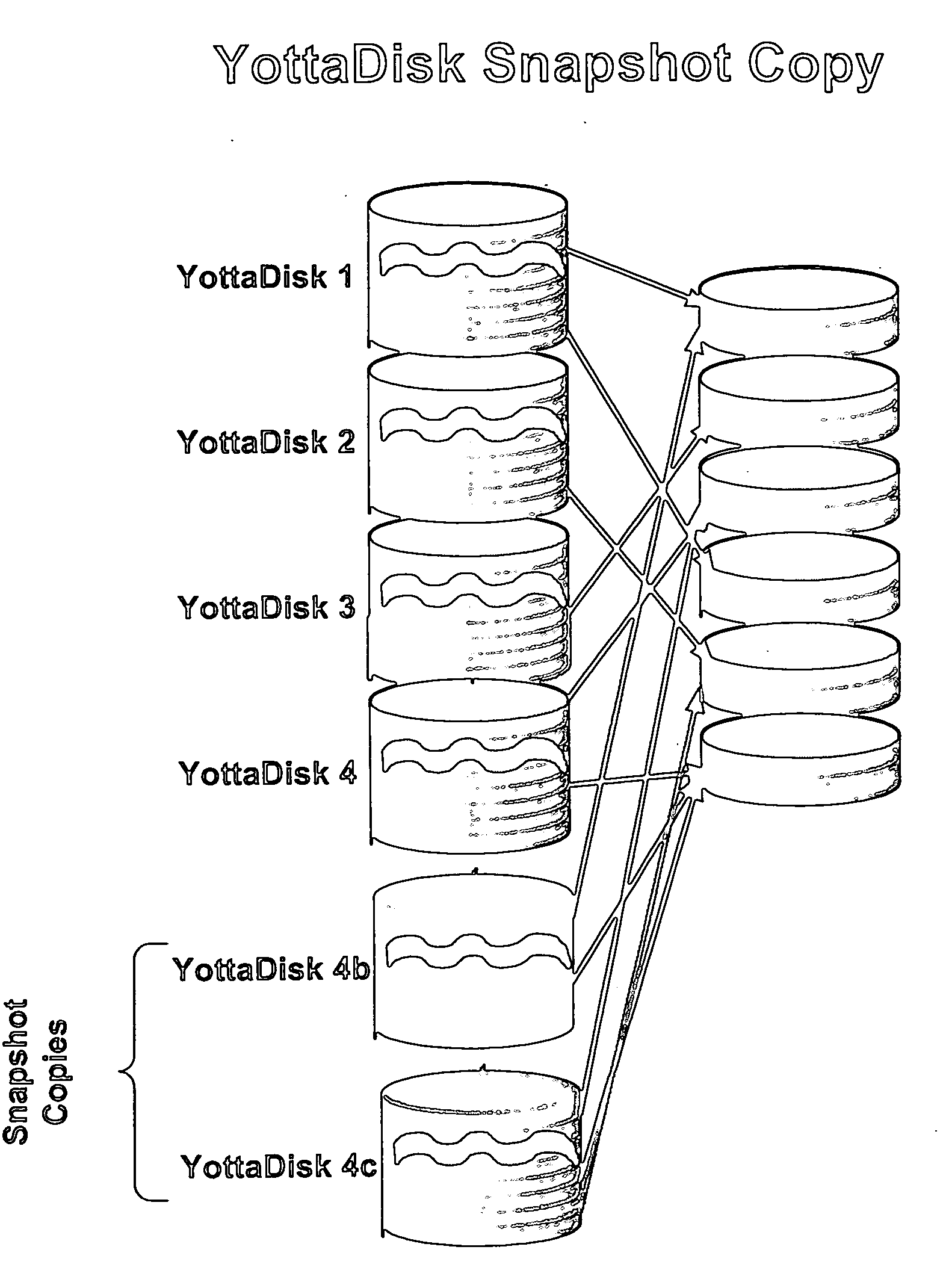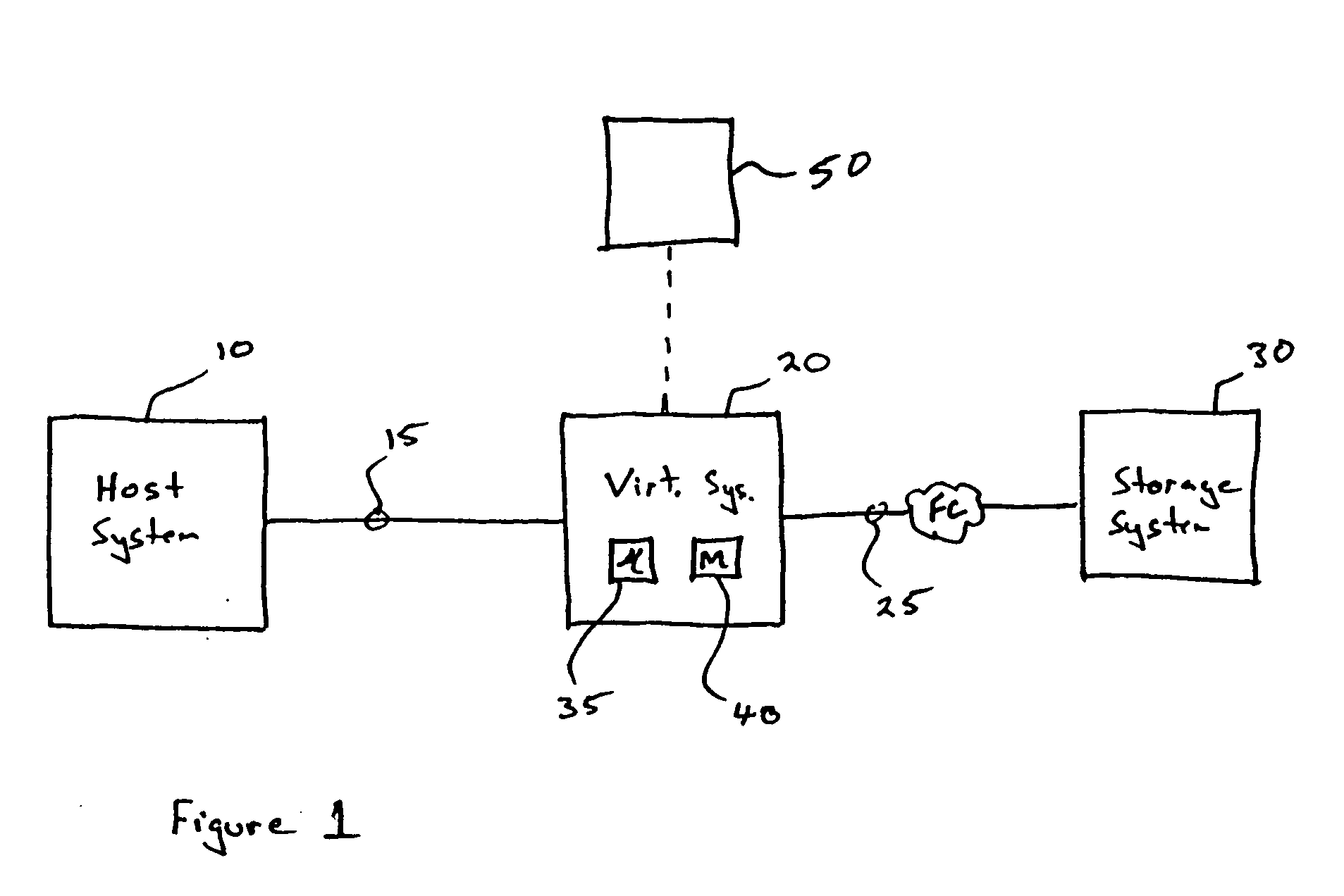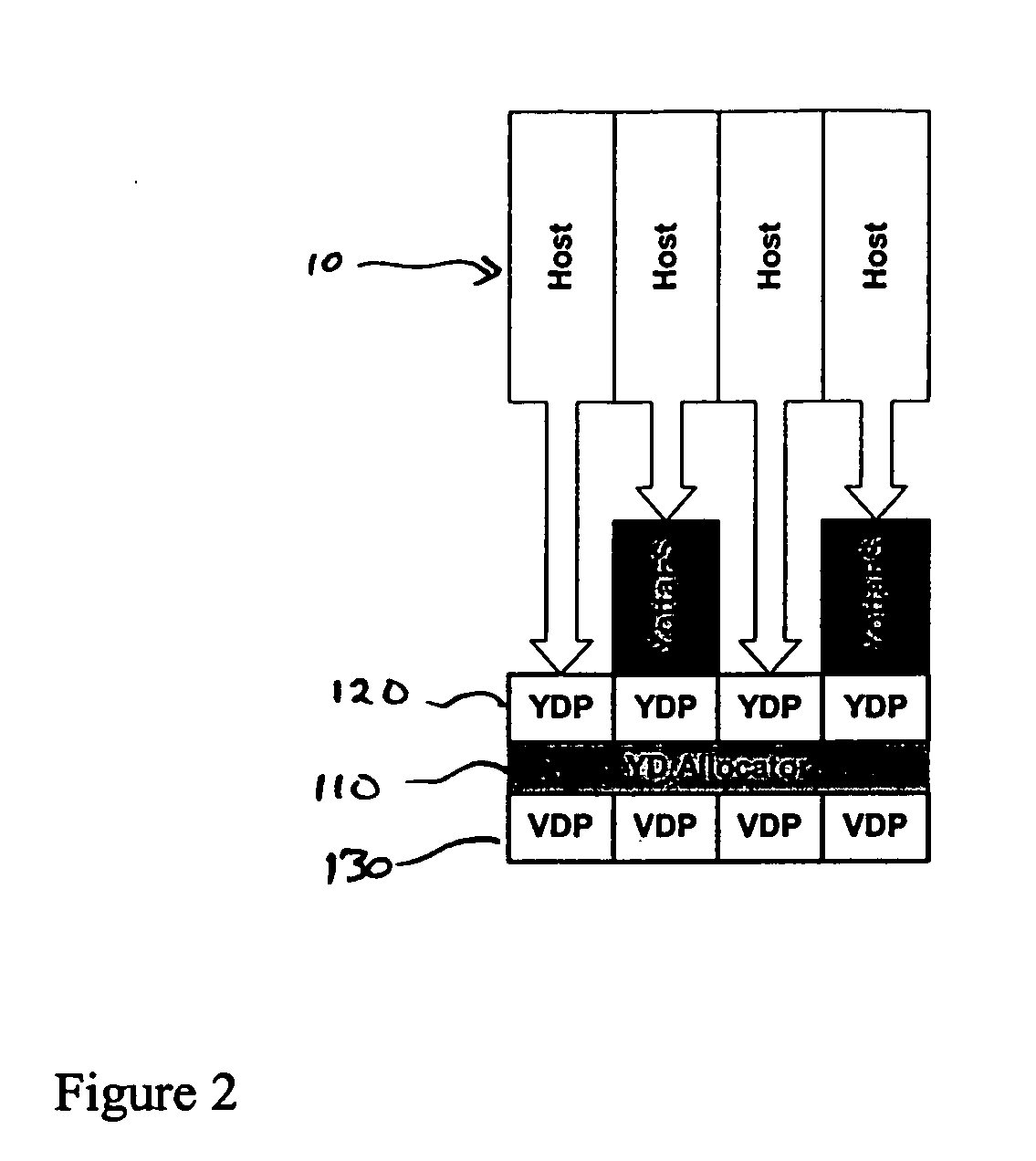Storage virtualization system and methods
a virtualization system and storage technology, applied in the field of storage virtualization system and methods, can solve the problems of large management, maintenance, cost, and general inability of the operating system to perceive the storage device as anything but real disks, and the expansion of the customer's storage needs is often expensive and laborious
- Summary
- Abstract
- Description
- Claims
- Application Information
AI Technical Summary
Benefits of technology
Problems solved by technology
Method used
Image
Examples
Embodiment Construction
[0033] The present invention provides a virtualization system that allocates physical storage from a storage pool dynamically in response to host I / O requests, e.g., SCSI I / O requests, allowing for the amortization of storage resources through a disk subsystem while maintaining coherency amongst I / O RAID traffic. In one embodiment, the virtualization functionality as described herein is implemented in a controller device, such as a controller card residing in a switch device or other network device, coupled to a storage system on a storage area network (SAN). The resulting virtual disk image that is observed by the host computer is larger than the amount of physical storage actually consumed. Various optimizations are included to ensure satisfactory performance. Another advantage of the virtualization system is the snapshot capability. The virtualization system also allows for storage to be provided and managed as a utility to a large variable customer base.
[0034]FIG. 1 illustrates...
PUM
 Login to View More
Login to View More Abstract
Description
Claims
Application Information
 Login to View More
Login to View More - R&D
- Intellectual Property
- Life Sciences
- Materials
- Tech Scout
- Unparalleled Data Quality
- Higher Quality Content
- 60% Fewer Hallucinations
Browse by: Latest US Patents, China's latest patents, Technical Efficacy Thesaurus, Application Domain, Technology Topic, Popular Technical Reports.
© 2025 PatSnap. All rights reserved.Legal|Privacy policy|Modern Slavery Act Transparency Statement|Sitemap|About US| Contact US: help@patsnap.com



